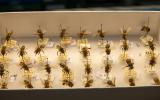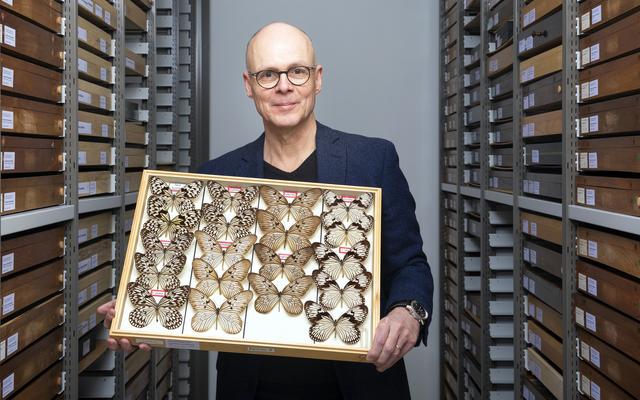The honey bee is a symbol of biodiversity. But this diversity has faced some challenges in the last 50 years, including the honey bee in Switzerland. In the 1980s, for example, the varroa mite caused the near extinction of the wild honey bee in Europe. The arrival of the Varroa mite also brought major challenges for beekeeping practice with the "domesticated honey bee", as infested colonies require annual treatments.
The question now arises whether the drastic decline of wild honey bees and the intensification of beekeeping in recent decades have influenced the genetic diversity of honey bees in Switzerland.
«Museum bees» provide answers
High genetic diversity is important for a species to be able to adapt well to changing environmental conditions. That is why scientist Melanie Parejo is investigating the genetic development of the honey bee in her current research. To do this, she is comparing the DNA of today's bees with those from the collection of the Natural History Museum. The oldest of the 22 "museum bees" dates back to 1879. The examination of the honey bee genome of the last 140 years yielded unexpected results.
Natural science collections are indispensable for this look into the past. Today's species diversity as well as the genetic composition of an animal species are only snapshots - changes in both areas only become apparent in the course of time and can only be proven by means of preserved specimens. Our natural history collection as an archive of past ecosystems has also made it possible to scientifically research such changes in honey bees.
New foci in the honey bee genome
The decline in native honey bee colonies since the 1950s has meant a reduction in the gene pool. In parallel, beekeeping became more professional, which also meant increasing breeding efforts. Both factors suggest a decline in the genetic diversity of a population. Nevertheless, Melanie Parejo's study does not find any evidence of a significant loss of genetic diversity in Swiss honey bees.
Although genetic diversity remains virtually unchanged, some differences in specific regions of the genome are apparent when comparing museum bees with modern ones. Such differences are explained either by natural or human-induced selection. One significant difference was found in genes of the immunoglubulin family. These proteins are responsible for regulating and mitigating infections in other insects. There is thus evidence that the honey bee has responded to the pressure of emerging pathogens and parasites in recent decades.
Another genetic difference between modern and museum bees was found in certain genes of the nervous system. Some of these proteins are targets of several insecticides in use as pesticides or biocides. This suggests that the honey bee has had to adapt to the increased use of chemicals in modern agriculture.
You can read the details of Melanie Parejo's research results in the current January issue (01/2021) of the «Schweizerische Bienen-Zeitung».





